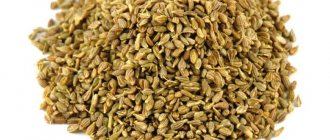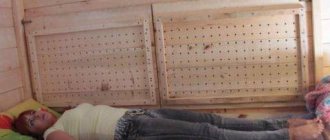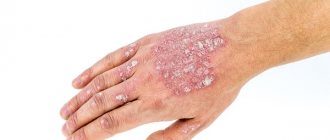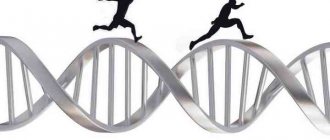From this article you will learn:
- the best ointment for scars and scars on the face and body,
- laser scar removal: prices, before and after photos,
- scar after cesarean section: photo, how to treat.
A scar is a formation on the skin that occurs as a result of tissue regeneration at the site of the wound surface. Scars often form after traumatic tissue damage or surgical incisions (for example, a cesarean section scar). They can also be caused by inflammatory skin diseases - these include scars after smallpox, chickenpox or acne.
When referring to scars, people often use a synonym, calling them scars. Scars consist predominantly of fibrous connective tissue, which is the framework of most organs and tissues in our body. Fibrous connective tissue includes fibers such as collagen and elastin.
Scars: photo
Types of scars –
Correct scar removal depends, among other things, on what type of scar you have. It is customary to distinguish the following five types of scars...
- Flat, pale scars (Figure 1) are the most common type of scar. They protrude only slightly above the surface of the skin and are initially red or dark red in color. Over a usually two-year period, such scars gradually fade and become even more flattened.
- Hypertrophic scars (Fig. 2-3) – their peculiarity is that they protrude very much above the skin level. They also tend to have an intense red or purple color. As a rule, this is the type of scar from a caesarean section - photo 3.
- Keloid scars/scars (Fig. 4) – are formed as a result of excessive collagen formation at the wound site. The peculiarity of these scars is that scar tissue continues to grow far beyond the wound itself, even after the wound has already healed.
- Contracture scars (Fig. 5) are usually formed as a result of burns. Such scars tighten and compress the skin, limiting its mobility.
- Atrophic scars (Fig. 6) - they look like indentations on the surface of the skin. Most often, scars on the face look like this after chickenpox or acne.
Formation of scars –
Scar formation is a natural healing process of the skin after damage (Fig. 7). Initially, the wound surface becomes covered with crusts, and the traumatic defect itself begins to be filled with soft granulation tissue. Gradually, the granulation tissue is replaced by dense fibrous connective tissue (collagen), which is produced by cells called fibroblasts.
Fibroblasts actively produce collagen at the site of skin damage for three to four months, which usually leads to a gradual elevation of the scar above the skin level and the formation of a bumpy surface. At the same time, blood capillaries actively grow, causing the scar to become red.
Then, some of the excess collagen begins to break down, and the number of newly formed capillaries decreases. This causes the scar to gradually become smooth, soft and begin to fade. In most cases, scars remain forever, and only in very rare cases do they disappear without a trace within the first two years after the injury.
How to prevent scars -
It's impossible to completely prevent scars from forming, but there are a number of things you can do to help your scar become less noticeable and heal better...
- If a wound forms on the skin, immediately clean it of dirt and disinfect it.
- If the wound is deep, use a pressure bandage, because... this can help smooth out the appearance of scars.
- Always protect the wound from water (do not wet wounds with water).
- Use a scar and scar treatment to reduce redness and promote healing. This could be a special ointment for scars and scars, or a silicone-based gel/plaster.
- Gently massage the scar area as the scabs fall off after healing. Massage helps prevent massive collagen sheets from accumulating and turning into scars.
Important points -
- Do not cover the wound hermetically; access to oxygen allows crusts to form faster, which speeds up the healing of the wounded area.
- Do not pick or tear off the crusts under any circumstances, as... this will definitely lead to the formation of a significant scar.
- For antiseptic treatment of wounds, use any antiseptics except hydrogen peroxide, because... it can cause damage to surrounding healthy skin tissue.
- Do not apply vitamin E to wounds and fresh scars, because... it interferes with the proper rate of healing.
- Do not pick or squeeze pimples - this leads to the formation of atrophic scars on the face.
How to get rid of scars -
Depending on the type of scar, as well as its age, there are several treatments that can help make them less noticeable and improve their appearance. Keep in mind: just improve, because... It is hardly possible to completely get rid of scars without leaving a trace.
In this article we will focus on –
- cream for scars and scars (for example, Dermatix, Kelo-Kot...),
- laser scar removal,
- surgical removal of scars.
Also used to treat scars are:
- silicone patches (for example, Mepiform),
- medium or deep chemical peeling techniques,
- dermabrasion technique (skin resurfacing),
- cosmetic camouflage (make-up or tattoo on scars). Read about these methods using the links in the relevant articles. A combination of several treatment methods is often used.
Which method is most effective in removing scars?
The effectiveness of correcting scars and scars on the body depends on how correctly the method of their removal is chosen.
Basically, means and methods for eliminating the defect are prescribed depending on the type of scar and the time of its appearance:
- For wounds on the body and after surgical operations, it is necessary to start using special creams as early as possible. Typically, doctors recommend their use at the stage of wound epithelization or after removal of sutures. Creams and gels have a good absorbable effect: Contratubeks, Dermatix, Kelofibraza, Imoferase, Cicatrix, Naftaderm, Narbiril. Using them for several weeks significantly reduces the likelihood of rough scar tissue forming.
- If the scars remain visible after applying ointments, then you can resort to chemical peeling. The use of acids allows you to remove the surface layer of cells, which will reduce the visibility of the defect.
- Atrophic scars become less noticeable after the injection of dermal fillers containing hyaluronic acid or collagen. Fillers smooth the skin and activate the production of its own collagen.
- Laser therapy helps to cope with the most noticeable scars on the body. The effect of the procedure is determined by the type of laser. This may be superficial skin polishing, or an impact on the lower layers of the epidermis, as a result of which the secretion of collagen fibers is activated.
- For severe scars or in cases where there are several of them on the body, surgical removal of the scar tissue is performed. Several methods are used. This can include plastic surgery with skin grafting or expander dermotension. The essence of the latter method is to sew in a silicone expander next to the scar, into which physical strength is pumped. solution. This leads to a gradual stretching of the skin, after which the expander is removed, the scar is excised and the resulting skin is stretched over the damaged area.
The type of scar correction should be selected together with a doctor, taking into account the indications and contraindications for each method.
The best external remedy for scars and scars -
The pharmacy always has a selection of external scar treatments that help make them less noticeable on the skin. The most common and well-known means include -
→ Dermatix gel (Fig. 8), → Kelo-Kot gel (Fig. 9), → Zeraderm Ultra gel, → Fermenkol gel, → Contractubex gel, → Mederma gel, → silicone patches Mepiform or Dermatix (Fig. 10).
How to get rid of scars using these products - the basis of all these products is either silicone or sodium heparin. Silicone perfectly moisturizes and protects the skin, making it more elastic. Sodium heparin is also excellent at keeping the skin hydrated. Note that all these remedies are designed not only to help the proper formation of scars, but also prevent the formation of keloid scars.
As for the opinion of doctors, there is no unanimous opinion about which remedy is better. Moreover, some doctors generally recommend not to touch fresh scars and not to smear them with anything, but to let the body cope with the healing process on its own. And only if there is a tendency to form keloids, it is worth using Dermatix or Kelo-Kot as a preventive measure.
Scar cream: reviews, effectiveness studies
We carefully studied the reviews of doctors, as well as reviews of patients who use or do not use such external agents. As a result, we did not find a direct relationship between the use of these agents and the formation of an invisible or almost invisible scar.
It seems that everything is really, strictly individual... Many patients smeared the scars and still got terrible scars, but there are also those who did nothing at all, and the scars themselves gradually disappeared or became completely invisible (24stoma.ru) . We have not found any published objective scientific evidence that any of these remedies actually work. All published clinical studies are based only on subjective assessment methods: surveys and examinations.
Yes, there is scientific research showing that silicone (which is included in most scar treatments) helps create a thinner, more elastic scar, but that's about it. However, no quantitative indicators are provided in these studies: for example, what percentage of patients had a significant improvement - in relation to the total number of patients involved in the study. All this casts some doubt on the high effectiveness of this group of drugs.
For example, massaging a developing scar with regular moisturizer or Vaseline also improves elasticity and better distributes the new collagen that forms in the scar tissue. But it is difficult to understand how much better silicone or sodium heparin is than regular cream or petroleum jelly, and whether it is worth paying so much for them.
Therefore, there is no clear answer to the question: which ointment for scars or cream for scars and scars is better? Using these creams and gels will not guarantee that your scar will be less noticeable. However, we can say that the use of these products still reduces the risk of forming rough scars.
Remedies for scars and scars: price
The packaging of each of these gels is 15 g, and only Fermenkol is available in tubes of 30 g.
- Dermatix (Dermatix) - costs between 2500-3000 rubles,
- Gel Kelo-kot – price from 1300 to 1700 rubles,
- Zeraderm ultra - price from 3000 to 4000 rubles. (rich composition, which additionally includes coenzyme Q10 and vitamin K).
- Fermenkol from a Russian manufacturer - costs about 1,500 rubles,
- Contractubex costs only 600 rubles, but this drug has the worst reviews among both doctors and patients.
- Nuobisong scar cream - reviews note that this Chinese cream, which is sold illegally and only via the Internet, has neither the composition indicated on the packaging nor detailed instructions in Russian. Therefore, despite its low cost of about 300 rubles, we do not recommend using it.
Treatment of post-operative scars and cuts
It is better to combat such scars with the help of special pharmaceuticals. Folk remedies in this case will be completely useless.
Contractubex is suitable for the treatment of all types of scars. Available in the form of ointments, gels and creams. The components included in the drug allow you to smooth the surface of the scar, reduce it in size and get rid of the bluish color. Contractubex must be applied at least twice a day, the treatment period will be at least 3 months.
The Mepiform patch is very effective in the treatment of fresh and old scars, promoting their rapid resorption. The patch is glued to the clean surface of the scar; the size of the patch should cover not only the entire scar, but also extend beyond its borders by at least 1 centimeter. The patch should be changed no more than once every 3-5 days. Other silicone patches are also no less popular in the treatment of scars.
Use around the clock, you can remove it when taking a shower or bath, then stick it on again. The treatment period is from 2 to 6 months, it all depends on the condition of the scar.
Scars can only be made less noticeable at home; it will not be possible to completely get rid of them or cure them. To completely get rid of scars, especially old ones, you need to seek help from specialists, laser resurfacing or surgical excision. The sooner you start treating scars, the greater the effect of treatment. Medicines have various contraindications and unwanted side effects, therefore, before use, you should read the instructions in detail or consult a doctor.
We will be very grateful if you rate it and share it on social networks
Treatment with folk remedies.
It turns out that scars on the human body are far from uncommon these days. They can happen due to the specifics of the profession, an extreme sport, or an accidental fall. Today, a scar can be eliminated using a laser, but this is a painful procedure and expensive. The result does not always live up to expectations. Therefore, you will always have time to undergo this operation, but first you should try proven scar treatment with folk remedies.
Laser scar removal: prices, before and after photos
Laser scar removal or laser skin resurfacing (these are the same thing) is an effective method of dealing with scars. The lasers used for this procedure produce high-frequency light pulses whose thermal energy vaporizes thin layers of skin, layer by layer.
Laser scar removal is especially effective for treating post-surgical scars that no longer grow or thicken. For example, a cesarean scar can be perfectly removed with a laser. Laser resurfacing also works well on shallow atrophic scars after acne (pimples).
Laser scar removal: before and after photos
How does laser scar removal work?
First, the scar is cleaned and the treatment area is marked with a marker. Often the area being treated is numbed with a local anesthetic. Some patients are given sedatives or anti-anxiety medications to help them relax. If facial scars are removed, the patient is given special glasses to protect the eyes.
During the procedure, the patient may feel tingling and burning. Light bleeding may occur after the procedure. When the laser scar removal procedure is completed, a special ointment for scars after surgery is applied to the treated area, after which the wound is covered with a bandage.
24 hours after the procedure, patients are advised to begin cleaning the treated area 4-5 times a day and applying a special ointment, or Vaseline, to prevent crusting. Healing after laser scar removal usually takes 10-21 days, depending on the size of the scar and its location.
Laser scar removal: video
Laser scar removal: prices Cost varies depending on the area where the scar is located, as well as its size. Therefore, on average, to remove scars with a laser, the cost per 1 cm2 will be from 1500 to 2500 rubles.
Possible side effects after the procedure -
- pain, burning (disappears within 12-72 hours),
- swelling (disappears within 48 hours),
- bleeding (disappears within 12 hours),
- formation of crusts, peeling (within 5-7 days),
- pigmentation,
- infection,
- re-formation of the scar.
After complete healing, the patient should -
- apply oils to the treated area for 2-3 months,
- avoid direct sunlight on this area,
- Always ensure that young skin is constantly moisturized.
How to remove a fresh cut scar
The younger the scar, the easier and faster it is to cure. However, it is very important to wait until the wound has completely healed, otherwise anti-scar applications and scrubs can only worsen the injury.
In order to start treatment on time, it is useful to know the main stages of scar formation:
- The first stage occurs approximately a week after the cut - the edges of the wound grow together with fragile granulation tissue. There is no scar itself yet, but at this stage it is important to maintain hygiene to prevent suppuration or re-opening of the wound.
- The second stage - formation - occurs within a month after the injury. Elastin and collagen fibers are formed in the granulation tissue; increased blood supply is observed in the scar area, giving it a red-pink color. During this period of time, it is important to avoid increased physical activity so that the scar does not open.
- The third stage - maturation - lasts up to 1 year. During this time, the number of vessels inside the tissue decreases, and therefore the pink color disappears. The scar becomes white and collagen fibers line up along the skin's tension lines.
The most effective treatment will be therapy, which should be carried out between the second and third stages. Scars older than 1 year are already considered old and require a more serious approach than fresh ones.
To combat fresh scars, applications of anti-scarring agents, cosmetology and physiotherapy are suitable.
Using cosmetology
For shallow and thin scars, a cosmetologist is usually not required - the problem can be solved independently with applications of gel or cream. But if the scar is large or has affected several layers of the epidermis, then even at a young age the injury cannot be avoided without procedures. What types of cosmetology will be effective:
- Cryotherapy . Local freezing of the skin with liquid nitrogen - under its influence, the stratum corneum of “irregular” scar skin dies, and healthy tissue is born in its place. The course lasts 2–3 months.
- Compression . Compressing the scar with shapewear or an elastic bandage. An affordable but ineffective procedure: the effect becomes noticeable only after six months, and the compression itself must be maintained for up to 2 years.
- Various types of peeling , such as dermabrasion or chemical peeling. The principle of the procedures is the same - removal of the top layer of skin by cutting with microcrystals, acids or laser.
The listed methods are associated with unpleasant sensations, and, in some cases, even pain.
Using collagenase-based gels
A small young scar can be treated at home without resorting to aesthetic medicine or cosmetology. It is enough to systematically apply the full course of anti-scar agents, strictly following the instructions and recommendations of the doctor.
Fermenkol gel contains 9 active collagenase enzymes - a substance extracted from the bones of artiodactyls and crustacean shells. It promotes the production of collagen, which keeps the skin youthful and elastic.
With different types of scars, the number of its fibers ranges from deficiency to excess: with atrophic scars there is not enough collagen, and Fermenkol stimulates its production to the level of normal skin; with keloid and hypertrophic scars there is a lot of collagen, which is what causes their raised relief. In this case, Fermenkol breaks down excess fibers into simple substances, which are used to build new tissue or are eliminated from the body naturally.
The gel will cope with fresh scars in a few months, provided that applications are made up to 5 times a day in a thin layer.
Find out which scar correction method is optimal for you!
doctor Svetlana Viktorovna Ogorodnikova.
doctor
With the help of physiotherapy
For large or deep scars, simple regular applications are not enough: the cosmetic product is absorbed into the upper layers of the epidermis, without reaching the lower ones, which also require treatment.
The problem is solved by physiotherapy - physical impact on the body with current or ultrasound. Depending on the use, this may be electrophoresis (alternating galvanic current) or phonophoresis/ultraphonophoresis (ultrasound waves). Phonophoresis and ultraphonophoresis differ only in wave frequency, so in many sources these procedures are considered together.
Physical impact ensures the delivery of drug ions to deep tissues, where they accumulate and begin to act on the body gradually. Thanks to this, the effect of physiotherapy lasts longer than the result achieved by cosmetology.
Surgical treatment of scars –
Surgical treatment of scars involves excision of scar tissue and creation of a cosmetic suture. There are various methods of tissue suturing (for example, intradermal), which make it possible to ensure that the seam will be practically invisible in the future. For cosmetic stitches, very thin suture material is used.
How to get rid of scars at home -
First of all, start using external silicone-based products in the form of gels, which we described above. Of course, no remedy will completely get rid of a scar, but it can help make it less noticeable. In order to get rid of scars at home, you need to treat the scar several times every day for 4 months, so be prepared for long-term treatment.
General recommendations to improve the appearance of scars –
- Avoid exposing the scar to sunlight, as... this slows down the healing process and makes the scars more noticeable in color. If the frame is located on an area of skin exposed to the sun, then each time before going out into the sun, use sun protection (at least 30 SPF).
- Massage the scar area every day (at least 2 times a day for 3-5 minutes) to avoid excessive formation of fibrous tissue that makes up scars. You can do a massage either without anything or using oil or gel with silicone (see brands above).
- Continuously exfoliate the surface layer of skin, which consists of dead skin cells, using superficial chemical peels. It also reduces the risk of rough scars forming.
How to get rid of scars on the face using ointments and creams?
The pharmaceutical industry produces creams and ointments that claim to be able to remove scars. Let us say right away that it is unlikely that you will be able to get rid of existing scars in this way. At best, with regular use they will become slightly less noticeable. Such products help well at the time of scar formation. If you start using them immediately after surgery, there is a high probability that the postoperative scar will be almost invisible. Among the active substances, such creams usually contain onion extract, hyaluronic acid, and allantoin. There is also a method for treating keloid scars using pressure bandages with corticosteroid creams. A course of such treatment can make keloids flatter.
Treatment of scars with folk remedies -
Aloe vera
Aloe Vera is a natural, herbal remedy for scars and scars, which has anti-inflammatory and antibacterial effects. It works as an emollient that helps the healing process and promotes the growth of healthy cells, improving skin texture.
How to use - First, peel off the outer layer of the Aloe Vera leaf until a jelly-like substance appears. After this, apply the gel to the scar, massaging the scar in a circular motion until the Aloe Vera is completely absorbed. After 30 minutes of this, wash off the remaining aloe vera with water. Apply Aloe Vera gel twice a day. Important: Aloe Vera should not be used on open wounds.
Coconut oil
Coconut oil is another great natural ingredient that helps in getting rid of scars. Coconut oil contains lauric, caprylic and capric acids, which stimulate collagen synthesis and promote healing of damaged skin.
How to use: Heat natural unrefined coconut oil in your hands until liquid. After this, apply to the scar, massaging it with oil for 5-10 minutes. After this, leave the oil on the skin for another 1 hour so that the skin absorbs it completely. For best results, repeat the procedure 2-4 times a day.
Lemon
Lemon contains alpha hydroxy acids, which have a chemical peeling effect. As a result, lemon juice removes dead skin cells, promotes the growth of new cells, and improves skin elasticity.
How to use: Apply lemon juice to the scar (if your skin is sensitive, you can dilute the juice with water or oil). Wait 10 minutes and rinse with warm water. The procedure should be repeated once a day. Keep in mind that lemon can discolor your skin and make it very sensitive to sunlight. Therefore, be sure to apply sunscreen or hide this area of skin from the sun to avoid hyperpigmentation.
Apple vinegar
Just like citric acid, malic acid is an alpha hydroxy acid that is used for chemical peeling of the skin. Therefore, it will also help exfoliate and remove dead skin cells.
How to use: Mix equal amounts of apple cider vinegar and water. Apply this solution to the scar using a cotton swab. Leave on for 5 minutes and then rinse with water. Repeat once a day.
Important : keep in mind that lemon or apple cider vinegar based exfoliants will be much less effective than professional chemical peeling procedures performed in beauty clinics, as well as special professional preparations for superficial peeling at home.
Tea tree oil
Tea tree oil reduces scars and blemishes on the skin due to its anti-inflammatory and healing properties. Just keep in mind that you should never use tea tree oil undiluted.
The first use is to add 4 drops of tea tree oil to 2 tablespoons of water. Wet the scar with this solution 2-3 times a day.
The second option is to mix 2-3 drops of tea tree oil with 1 teaspoon of almond oil. Apply this mixture to the scar and leave for 30 minutes before rinsing with water. Use once daily.
Traditional methods of scar removal
Among the folk methods of solving the problem of scars, the following methods are considered the most popular and accessible:
- Lemon juice. It has long been known as a whitening agent, but in this case it is suitable for smoothing the skin and removing scars. Due to the slight whitening of the skin, scars and stretch marks become less noticeable.
- Freshly squeezed aloe juice . As soon as a skin injury occurs, it is recommended to quickly apply a cut aloe flower to prevent the appearance of scars. Some experts advise using daily lotions and its juice until the wound is completely healed. But you need to start treatment with the juice of this plant immediately, since its properties are effective only when the wound is fresh.
- Natural honey . It is included in most masks for resolving old scars and scars. It does not irritate the skin of the face, which is why it can be applied several times a day.
- Oatmeal mask . You must immediately take into account that large flakes will not work, so the oatmeal must be chopped immediately. Then add a little cream (1 tablespoon). The mixture should be stirred well, and at the end add a few drops of lemon juice. You need to keep this mask on the scar for 10 minutes.
Scar removal masks
Mumiyo mask. This product has long been used for cosmetic purposes, not only to improve the condition of the skin, but also for hair care. As a component of an anti-scar mask, Shilajit perfectly smoothes the upper layer of the epidermis, but only when the scar is small and relatively new. To prepare a mask from mumiyo, you need to buy baby cream, and then add 2 g of mumiyo powder to it.
Fruit acid mask. They are used as home peeling, as they polish the top layer of the skin well. Due to this peeling, the scar becomes smaller. Regular apple cider vinegar will help replace expensive products. But before use, it must be diluted with warm water in a ratio of 1:3.
If the scar is small, then you can apply it to the skin using a cotton pad. It should be applied to the scar for 15 minutes.











